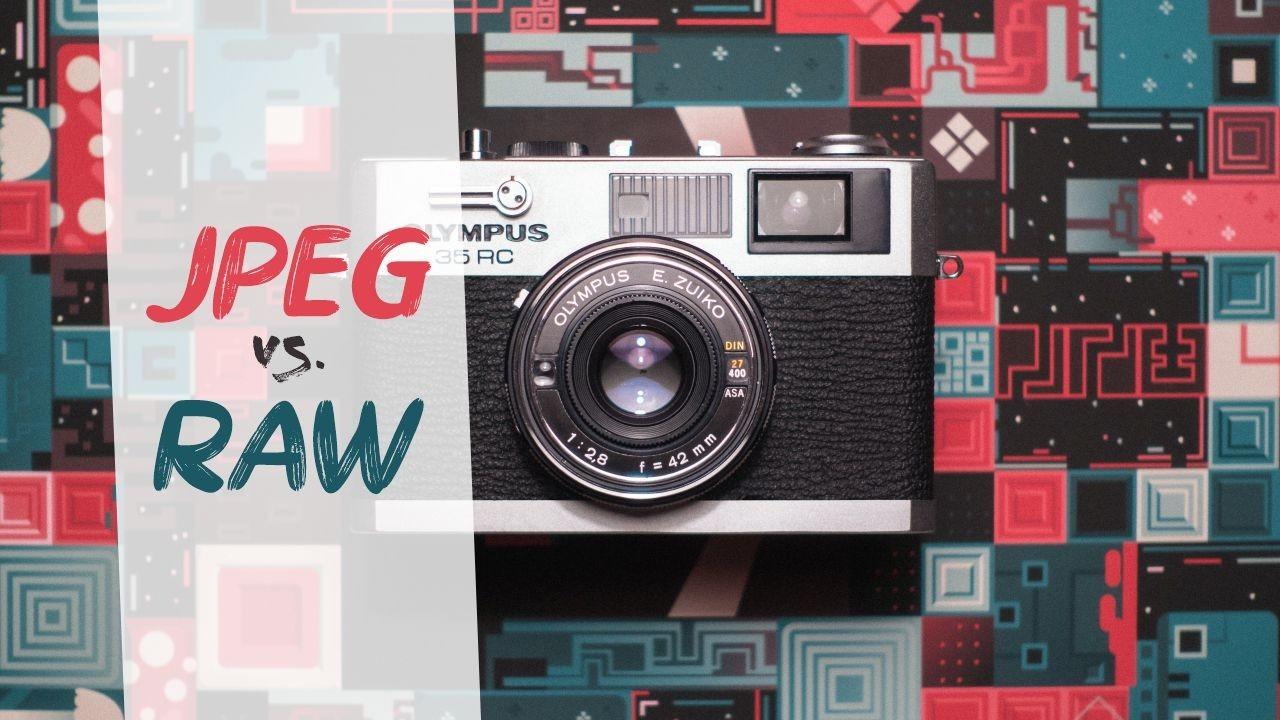Difference Between JPEG and RAW
Jan 29, 2020
The majority of Digital Cameras, including mobile phones, can shoot in both RAW format and JPEG format. So, what are the differences between these two image file formats? And when shall we shoot in RAW and when shall we use JPEG?
- RAW image (also known as a “digital negative”) is an image file that contains unprocessed or minimally processed data from a digital camera’s sensor.
- JPEG file is a commonly-used image file format, which will be processed and compressed by the capture device according to the settings made by the user before archiving.
Shooting RAW vs JPEG is a question that every photographer faces at some point. There are many articles out there that cover the topic from the basics of size and quality to all of the advanced technical details regarding colour bits per channel, compression, firmware DCT processing, etc.
If you want the technical details regarding RAW vs JPEGs, Wikipedia and other sites have great professional primers discussing the fundamental functional differences, a brief Google search will also unearth loads of additional more in-depth technical resources as well.
This article is designed to teach you the differences between RAW and JPEG (JPG) from a practical point of view.

JPEG (.jpg, .jpeg, .jpe, .jif, .jfif, .jfi)
Few Extra Bits
JPEG files are processed right within the camera. How exactly they are processed varies from model to model (of the camera). While colour temperature and exposure are set based on your camera settings when the image is shot, the camera will also process the image to add blacks, contrast, brightness, noise reduction, sharpening and then render the file to a compressed JPEG. These files are finished and can be viewed and printed immediately after the shot.
Remember, because the image is compressed and saved to JPEG, which is a “loss” file format, much of the initial image information and detail is discarded and cannot be recovered. You may hear the term “Dynamic Range” used a lot when discussing RAW files vs JPEG. Dynamic Range is simply the amount of tonal range detail from the darkest shadows to the brightest highlights. Dynamic Range detail in JPEG files is significantly reduced as compared to RAW.

RAW (.dng, .arw, .crw, .nef, +24)
Few Extra Bits
RAW files are uncompressed and unprocessed pictures of all of the detail available to the camera sensor. Because RAW files are unprocessed, they come out looking flat and dull. RAW images need to be viewed and processed using your camera’s software or in more robust commonly used software like Adobe Photoshop, Lightroom, Aperture, etc. before being ready for display or print.

Common Questions
Let's have a look at a few common questions we received in the past from our customers to make everything even more apparent.
Are RAW files sharper than JPEG?
Not initially. JPEG image comes out of the camera just a bit sharper than the RAW files. While the additional sharpening makes the JPEG image look better, that sharpening cannot be removed from the original file (if needed) as it is built into the JPEG after being processed in-camera. The RAW file comes out of the camera without any pre-sharpening and lets you adjust that during the post-processing.
Can you convert a JPEG to a raw file?
The simple answer is NO. There is no way to convert a JPEG to the RAW file. Technically, it's possible of course to convert JPEG data format to RAW data format, but this will not make a RAW file. Following on the text above, RAW is unprocessed image data from the camera sensor. JPEG is processed image data. Typically, raw-files from modern cameras have 12-14-bit per pixel, which means up to 16384 values. JPEG can have only 256 luminance values per RGB channel. This means that JPEG contains much less data than a corresponding RAW file.
Does converting RAW to JPEG lose quality?
Not necessary. When converting from RAW to JPEG, you lose options for further photo editing. This is not quite the same as image quality. You can make a black & white JPEG from a RAW file, it will have a full resolution, but there is no way to make the JPEG colour again. You could, however, reprocess the original RAW file to make a different colour interpretation.
How big are RAW files compared to JPEG?
Much bigger. Although they both have the same size in pixels (3840x5760) the RAW file uses 26.6MB space when on the memory card, while the JPEG uses only 5.12MB. This means that you can place almost 5 JPEGs in the area of one RAW file.
Can you edit JPEG in Lightroom?
Yes, of course, you can. Lightroom treats images, whether they’re RAW, JPG, or TIFF, the same way. You will be able to use the same sliders (almost) and adjustments across the formats.
Can you print RAW images?
No. Why would you anyway? Most consumer photo labs will not print RAW files. Professional labs also do not print from RAW files. The acceptable file format for print is high-resolution JPEG or in some cases TIFF – both of which you can easily export copies of from your RAW files.
How many RAW files can 32GB and 64GB memory card hold?
Simply? 32GB - 800+/- and 64GB - 1600+/- If we look at uncompressed RAW with 24 bits per pixels and standard 12MP (megapixels) with this size around 36 MB per file, you should be able to fit the following numbers of files per memory card. 1GB - 23, 2GB - 47, 4GB - 95, 8GB - 190, 16GB - 381, 32GB - 762, 64GB - 1524, 128GB - 3048.

By now, you should have a strong understanding of the differences between RAW and JPEG file formats. Use this understanding, along with our situational advice to decide which file format best fits your needs for any particular situation. While the RAW format is a super format, that doesn’t mean it is the best format for all situations.
Are you still not sure? We are here to help. Simply get in touch here and we'll be happy to help.
Jakub Bors
@CleverPhotographer @BorsPhotography


